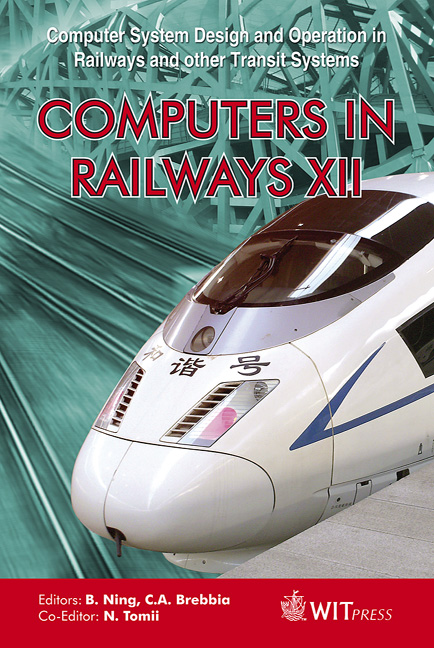The Simulation Of Passengers’ Time-space Characteristics Using Ticket Sales Records With Insufficient Data
Price
Free (open access)
Transaction
Volume
114
Pages
12
Page Range
419 - 430
Published
2010
Size
959 kb
Paper DOI
10.2495/CR100391
Copyright
WIT Press
Author(s)
J.-C. Jong & E.-F. Chang
Abstract
It is a very common approach for any business to analyze their historical sales records to adjust operation strategy. Recently, Taiwan Railway Administration, a government-owned railway operator, faces serious competitions from other transportation systems. It becomes very urgent for the operator to modify its timetables to meet demand patterns for increasing revenue. The key issue is how to estimate passengers’ time-space characteristics. For railroads with advanced automatic fare collection systems and simple service patterns, the estimation of passenger flow may not be difficult since detailed travel information is available. However, for systems with mixed traffic and insufficient ticket sales records, it requires a scientific method to deduce actual travel patterns from limited information. This study tried to establish such a model to reconstruct the timespace distribution of passenger flow. The model has been applied to Taiwan Railway Administration to estimate passenger flow. The result is very useful for decision makers to assess the utilization of train capacities and to adjust service plans, such as adding/deleting train services, changing stopping patterns, or modifying service termini. The proposed model can be applied to other railroads with mixed traffic operations and insufficient ticket sales records. Keywords: passenger flow estimation, ticket sales records. 1 Introduction Taiwan Railway Administration (TRA) is the oldest railway operator that provides intercity, regional and commuter train services in Taiwan. In early years when TRA was the only inter-city transportation provider, timetable preparations
Keywords
passenger flow estimation, ticket sales records





